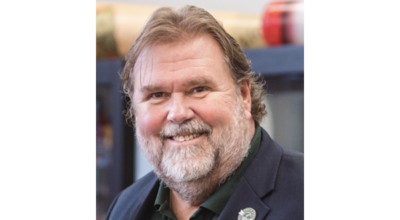The 1950s were big years for television
Published 11:43 am Thursday, November 13, 2014
The 1950s were big years for television.
Black and white shows were beginning to be overshadowed by color TV. In the 1950s, television was led by sitcoms and game shows. Obviously specials were still a big deal and color TV was starting to gain some traction.
The public was so anxious for color that they put a plastic sheet over the screen with green color at the bottom and blue at the top to give the appearance of a colored picture. It worked all right for westerns, which were outdoors but inside shots didn’t quite fit into the blue green combination.
“I Love Lucy” enjoyed a magical three-year run at the top of the ratings. Game shows like “$64,000 Question” and “The Price is Right” were very popular too.
But in the late ‘50s, westerns completely took over. In 1958, eight of the top 10 television shows were westerns.
Do you remember any of these shows from the 1950s? There were only three clear channels so the choice was limited: “Texaco Star Theater,” “Fireside Theater,” “Philco TV Playhouse,” “Your Show of Shows” with Sid Ceasar, “The Colgate Comedy Hour,” “Gillette Cavalcade of Sports,” “The Lone Ranger,” “Hopalong Cassidy,” “Mama,” “Arthur Godfrey’s Talent Scouts,” “The Red Skelton Show,” “Arthur Godfrey and His Friends,” “The Jack Benny Show,” “You Bet Your Life,” “Dragnet,” “The Buick Circus Hour,” “Gangbusters,” “The Milton Berle Show,” “Ford Theatre,” “The Jackie Gleason Show,” “The Toast of the Town,” “Disneyland,” “The George Gobel Show,” “December Bride,” “The Ed Sullivan Show,” “The Millionnaire,” “I’ve Got a Secret,” “General Electric Theatre,” “Alfred Hitchcock Presents,” “Gunsmoke,” “The Perry Como Show,” “The Danny Thomas Show,” “Tales of Wells Fargo,” “Have Gun Will Travel,” “I’ve Got a Secret,” “The Life & Legend of Wyatt Earp,” “General Electric Theatre,” “The Restless Gun,” “Wagon Train,” “The Rifleman,” “The Danny Thomas Show,” “Maverick,” “The Real McCoys,” “Father Knows Best,” “77 Sunset Strip,” “Wanted: Dead or Alive,” and “Perry Mason.”
The half-hour sitcom that had cost $30,000 a season before cost $40,000 or more in 1957. Performers, particularly big names, were demanding larger fees (for example, Harry Belafonte charged $40,000 for a single appearance; Elvis Presley wanted $50,000).
Comedy and drama shows declined in popularity while musicals and western adventure series boomed during the fall season. Eleven new western series appeared, bringing the weekly total to 20. Most popular of the cowboy series were “adult” westerns, aimed directly at adult men. If a viewer switched on his set and heard no shooting, he most likely heard singing. Numerous big-name male and female vocalists invaded TV.
Among lady vocalists who had new network shows were Polly Bergen, Patti Page, Gisele MacKenzie and opera star Patrice Munsel. Male newcomers included Pat Boone, Guy Mitchell, Dean Martin, Nat “King” Cole and Frank Sinatra.
Not all of the new singers could double as master of ceremonies, interviewer or comic (in the manner of Perry Como). Departing from the medium in 1957 were such one-time top favorites as Jackie Gleason, Sid Caesar and Robert Montgomery.
That year (1957) was a noticeably bad one for comedians. A sizable number of comics fell by the video wayside, including Gleason and Caesar, Ernie Kovacs, Wally Cox and Jonathan Winters.
Disneyland continued its run, with the Mickey Mouse Club not far behind. Captain Kangaroo, an imaginative new offering, won considerable acclaim.
Sports were huge on TV. What was the new sports craze in 1957? Bowling!
If you have cable TV most of these show are re-runs in the afternoon or late night. Will today’s popular shows be shown again in 65 years?
Who knows.
Jo-Ann Boepple works at the Edwardsburg Area History Museum.





